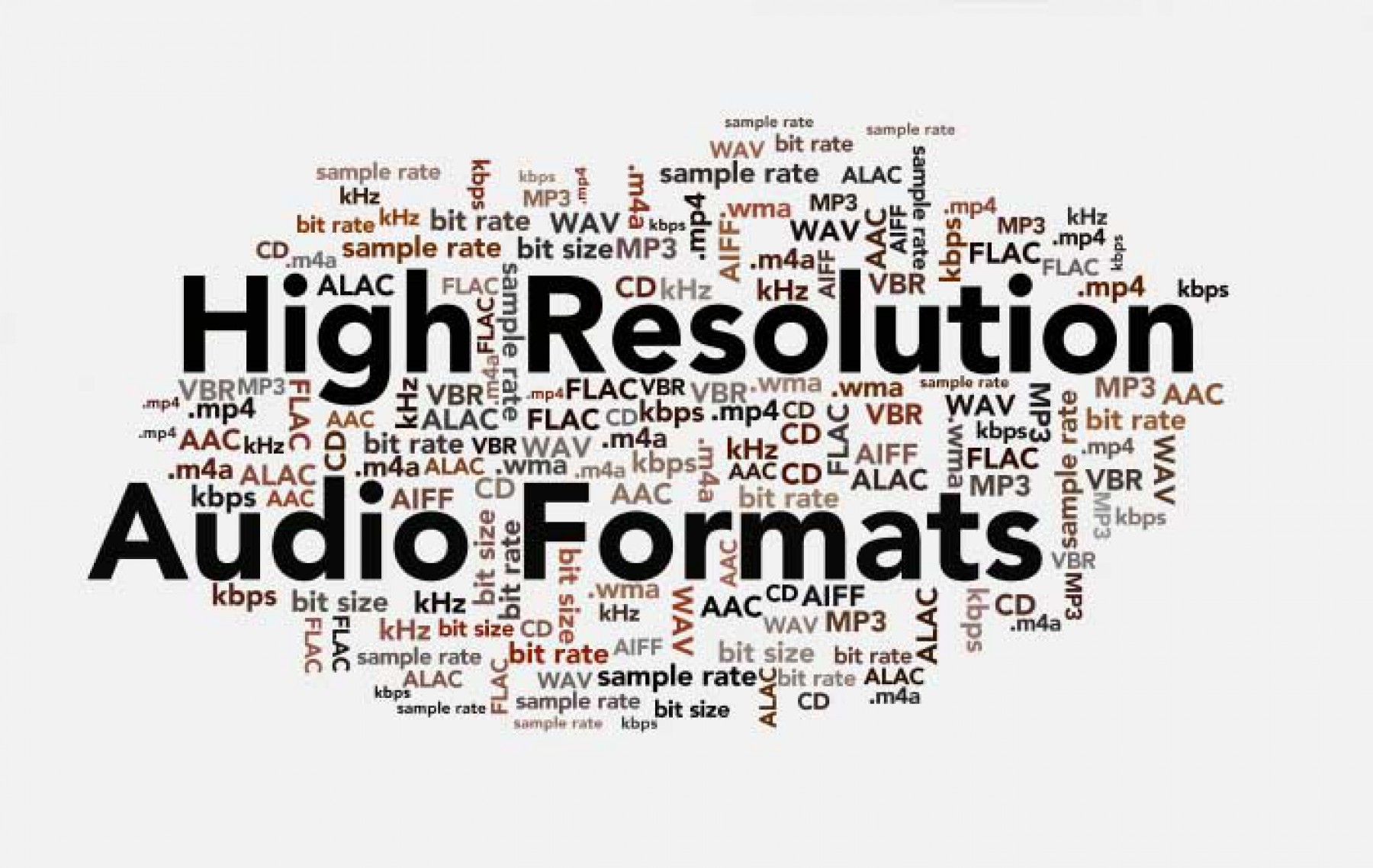Uncompressed Audio or ‘Studio Masters’
When music is recorded in a studio, it is stored and managed in large, completely uncompressed files, known as ‘studio masters’. These files, which can contain recordings of individual instruments or be the combination of different instruments, are the purest, most accurate representation of the music that was actually played by an artist in a studio, but are usually of an extremely large size that makes them impractical for distribution. Due to the music and data being completely uncompressed, one minute of a uncompressed audio (with 44.1kHz sample rate and 24bit sample size) usually exceeds 10MB of storage space.
The current standard file formats for storage are Audio Interchange File Format (AIFF), developed by Apple and Waveform Audio File Format (WAV), developed by a partnership between Microsoft and IBM.
Completely uncompressed files can be hard to source online, though some specialist websites such as HDTracks do offer WAV and AIFF formats for download.
Lossless Audio
Lossless audio files are theoretically one step beneath uncompressed audio recordings. The major difference between the two is that lossless audio is compressed to occupy smaller file sizes. Lossless file formats are encodings that take the studio master files and remove unnecessary parts of the data, without removing any of the audio information, so the music is entirely intact.
Lossless formats have the benefit over studio masters that music data can be kept in much smaller files, while having the benefit over MP3 encodings that none of the audio information is removed. The music found on CDs is encoded in lossless formats in order to deliver high quality sound, while being able to fit appropriate amounts of music onto each CD. There are again two main formats within the standard, Free Lossless Audio Codec (FLAC), the industry standard, and Apple’s variant ALAC.
Lossless audio tracks can be ripped from CDs using specialist software, or can be downloaded from online stores such as Linn’s Linn Records platform. FLAC is also reported to be the default file format offered by the Pono online store which will accompany the heavily-supported player.
Lossy Compression Codecs
Lossy compression goes to even greater lengths to reduce file sizes by removing data from tracks, including some directly from the audio stream. This means that parts of the music are actually taken out of the track, reducing the quality of the music. In theory, lossy codecs exploit ‘psychoacoustics’, removing parts of the tracks that are considered least important for perceived audio quality. This means that the parts that are removed from tracks are often the parts that are hardest for human ears to identify, or the bits that are most difficult for low grade speakers or headphones to reproduce. For the majority of listeners, the difference between a high quality lossy file and a lossless is entirely imperceptible, especially for those accustomed to using bundled in-ear headphones or poor quality speakers.
There are a multitude of codecs for lossy formats including Advanced Audio Coding (AAC), used by Apple for their .mp4 and .m4a files and Window’s WMA encoding, but the most commonly used is MP3. Preferred by the majority because of its open source nature, MP3 has can also be encoded in a variety of bit rates. The bit rate of a lossy file is expressed in kilobits per second (kbps) which is an indication of how much information is processed each second when the track is played back; the higher the bit rate, the more information the track contains and the less music has been removed from the audio track. It stands to reason then, that when it comes to bit rates, bigger is most certainly better. 320kbps is the highest possible bit rate that an MP3 can be encoded, while downloads from Apple’s iTunes are encoded using AAC with a bit rate of 256kbps as standard. Some services, such as Amazon’s online music store, allow downloads using variable bit rate (VBR), meaning that the bit rate can fluctuate throughout the track, with more data removed from sections of a track that requires less information. With most variable bit rate MP3 encodings, tracks average at 256kbps across their duration.
So that’s the basics of audio formats, and it for part one. Keep an eye out for part two next month when we’ll go deeper and look at what sample rates, bit depths and other technical terms are all about, and how much all of this really means to you, a music lover and soon-to-be-audiophile. Did we miss anything? Any feedback or questions? Let us know on Facebook or Twitter!
